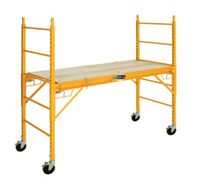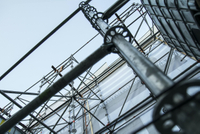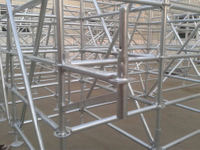Content Menu
● Introduction to Metal Frame Scaffolding
● Key Features and Components
● Types of Metal Frame Scaffolding
>> 1. Single Frame Scaffolding
>> 2. Double Frame Scaffolding
>> 3. Mobile Frame Scaffolding
>> 4. Cantilever Scaffolding
>> 5. Suspended Scaffolding
● Advantages Over Other Scaffolding Systems
● Safety Standards and Regulatory Compliance
>> Key OSHA Requirements
>> International Standards
● Best Practices for High-Rise Scaffolding Safety
>> 1. Thorough Inspections
>> 2. Proper Assembly and Disassembly
>> 3. Fall Protection
>> 4. Secure Foundations
>> 5. Load Management
>> 6. Anchoring and Bracing
>> 7. Weather Considerations
>> 8. Training and Supervision
● Common Hazards and Risk Mitigation
● Innovations in Metal Frame Scaffolding Safety
>> 1. Integrated Safety Systems
>> 2. Advanced Materials
>> 3. Digital Monitoring
>> 4. Prefabricated Platforms
>> 5. Virtual Training
● Conclusion
● FAQ
>> 1. What is the maximum height for metal frame scaffolding in high-rise construction?
>> 2. How often should metal frame scaffolding be inspected?
>> 3. What fall protection is required for high-rise metal frame scaffolding?
>> 4. How is metal frame scaffolding anchored for high-rise buildings?
>> 5. Can metal frame scaffolding be used in all weather conditions?
Metal frame scaffolding is a cornerstone of modern high-rise construction, providing workers with access, support, and safety at towering heights. But as buildings reach ever higher, the question arises: Is metal frame scaffolding truly safe for high-rise construction? This comprehensive guide explores the safety, design, regulations, and best practices of metal frame scaffolding in high-rise environments, supported by industry standards, visual resources, and expert insights.
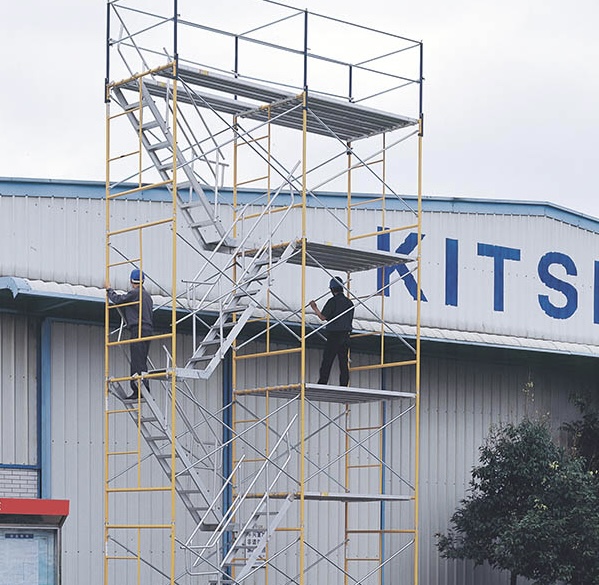
Introduction to Metal Frame Scaffolding
Metal frame scaffolding, often made from steel or aluminum, is a modular system widely used in construction for its strength, durability, and adaptability. Its primary role is to provide a stable platform for workers and materials at various heights, making it especially vital in high-rise construction projects.
Key Features and Components
Metal frame scaffolding systems are engineered for safety and efficiency. The main components include:
- Vertical Frames: The primary load-bearing structure, often in an “H” shape for stability.
- Cross Braces: Diagonal supports that prevent swaying and maintain rigidity.
- Horizontal Ledgers: Distribute weight evenly across platforms.
- Base Plates: Provide a stable foundation on the ground.
- Guardrails and Toe Boards: Prevent falls and dropped objects.
- Platforms: Typically made of wood planks or metal decks for workers to stand on.
- Versatility: Adaptable to various building shapes and heights.
- Ease of Assembly: Modular design allows quick setup and dismantling.
- Strength: High load-bearing capacity for workers and materials.
- Customizability: Can be tailored for specific project needs.
Types of Metal Frame Scaffolding
There are several types of metal frame scaffolding used in high-rise construction, each with unique benefits:
1. Single Frame Scaffolding
- Consists of a single row of frames and is typically used for lighter work or as a support for formwork.
2. Double Frame Scaffolding
- Features two rows of frames for extra stability and load-bearing capacity, making it suitable for heavy-duty tasks.
3. Mobile Frame Scaffolding
- Equipped with castor wheels, this type allows for easy movement and repositioning, ideal for tasks requiring frequent access to different areas.
4. Cantilever Scaffolding
- Used when the ground does not support base plates, cantilever scaffolding projects out from the building structure itself.
5. Suspended Scaffolding
- Platforms are suspended from the roof using ropes or chains, often used for façade work on very tall buildings.
Advantages Over Other Scaffolding Systems
While bamboo and wooden scaffolding are still used in some regions, metal frame scaffolding offers significant advantages, especially in high-rise construction:
- Consistency: Manufactured to precise standards, ensuring uniform strength and reliability.
- Fire Resistance: Metal is less susceptible to fire than wood or bamboo.
- Longer Lifespan: Resistant to rot, pests, and weather-related deterioration.
- Higher Load Capacity: Supports heavier equipment and more workers.
- Reusability: Can be disassembled, transported, and reused for multiple projects.
Safety Standards and Regulatory Compliance
Safety is paramount in high-rise construction. Metal frame scaffolding must comply with strict industry standards, such as OSHA, ANSI, and EN regulations.
Key OSHA Requirements
- Fall Protection: Required when working above 10 feet. Guardrails or personal fall arrest systems must be in place.
- Load Capacity: Scaffolds must support their own weight and at least four times the maximum intended load.
- Inspection: Regular inspections before each use and throughout the project.
- Guardrails: Mandatory on platforms above 10 feet (OSHA/ANSI) or 8 feet (CSA).
- Anchoring: Scaffolding must be anchored to the structure, especially as height increases.
- Height Restrictions: Fabricated frame scaffolding above 125 feet (38m) must be designed by an engineer (OSHA/ANSI).
International Standards
- EN 12810/12811 (Europe): Specifies performance requirements and methods of structural and general design for scaffolds.
- CSA S269.2 (Canada): Governs the design, erection, use, and dismantling of scaffolding.
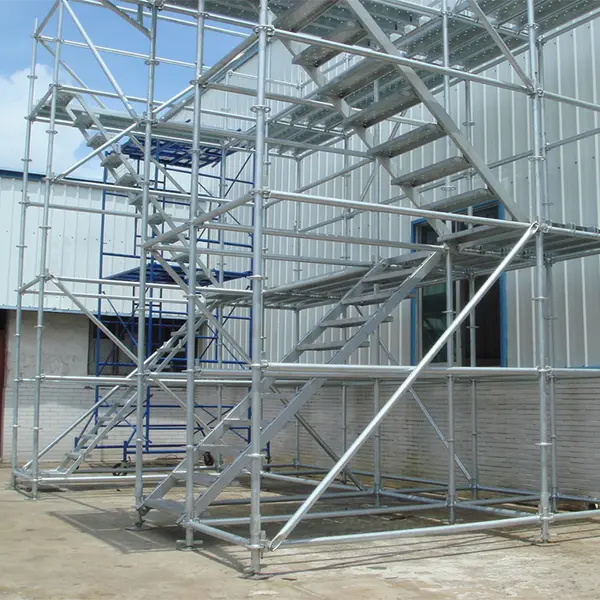
Best Practices for High-Rise Scaffolding Safety
1. Thorough Inspections
- Inspect all components for damage or wear before assembly and regularly during use.
- Check for loose connections, corrosion, or structural weaknesses.
2. Proper Assembly and Disassembly
- Follow manufacturer guidelines and ensure only trained personnel handle setup and removal.
- Use compatible components; do not force-fit or modify parts.
3. Fall Protection
- Install guardrails, toe boards, and use personal fall arrest systems as required.
- Ensure platforms are fully decked and free of gaps.
4. Secure Foundations
- Place scaffolding on level, stable ground with base plates or mud sills.
- Avoid using unstable objects (e.g., bricks, barrels) for support.
5. Load Management
- Do not exceed the scaffold's rated load capacity.
- Distribute materials evenly and avoid point loading.
6. Anchoring and Bracing
- Anchor scaffolding to the building at regular intervals (typically every other floor and the top level).
- Use cross-bracing to prevent sway and maintain plumb alignment.
7. Weather Considerations
- Do not use scaffolding in high winds, storms, or icy conditions unless a competent person has deemed it safe.
8. Training and Supervision
- Ensure all workers are trained in scaffold safety and emergency procedures.
- Supervision by a competent person is mandatory during assembly, use, and dismantling.
Common Hazards and Risk Mitigation
| Hazard | Prevention/Mitigation |
| Falls from Height | Guardrails, harnesses, toe boards, proper training |
| Scaffold Collapse | Regular inspections, load management, secure assembly, anchoring |
| Falling Objects | Toe boards, debris nets, tool lanyards |
| Electrocution | Maintain safe distances from power lines, use insulated materials |
| Slips/Trips | Keep platforms clear, use non-slip surfaces, secure planks |
| Weather-Related Risks | Avoid use in storms, high winds, or icy conditions |
Innovations in Metal Frame Scaffolding Safety
The construction industry is constantly evolving, and metal frame scaffolding has seen several innovations aimed at improving safety and efficiency:
1. Integrated Safety Systems
Modern scaffolding systems now include built-in guardrails, access ladders, and safety gates, reducing the risk of falls during both assembly and use.
2. Advanced Materials
The use of high-strength, lightweight alloys has made scaffolding easier to handle while maintaining or even increasing load capacity.
3. Digital Monitoring
Some high-rise projects employ sensors and IoT devices to monitor scaffold stability, detect unauthorized access, and alert supervisors to potential hazards in real time.
4. Prefabricated Platforms
Prefabricated metal decks with anti-slip surfaces and integrated toe boards are becoming standard, further minimizing the risk of accidents.
5. Virtual Training
Virtual reality (VR) and augmented reality (AR) are being used to train workers in scaffold assembly, hazard recognition, and emergency response in a risk-free environment.
Conclusion
Metal frame scaffolding is safe for high-rise construction when properly designed, installed, and maintained in accordance with industry standards and best practices. Its modularity, strength, and adaptability make it the preferred choice for tall structures worldwide. However, safety depends on rigorous adherence to regulations, regular inspections, competent training, and a proactive approach to hazard mitigation.By prioritizing these principles, construction professionals can ensure that metal frame scaffolding provides a secure platform for workers-helping projects soar higher, safely.
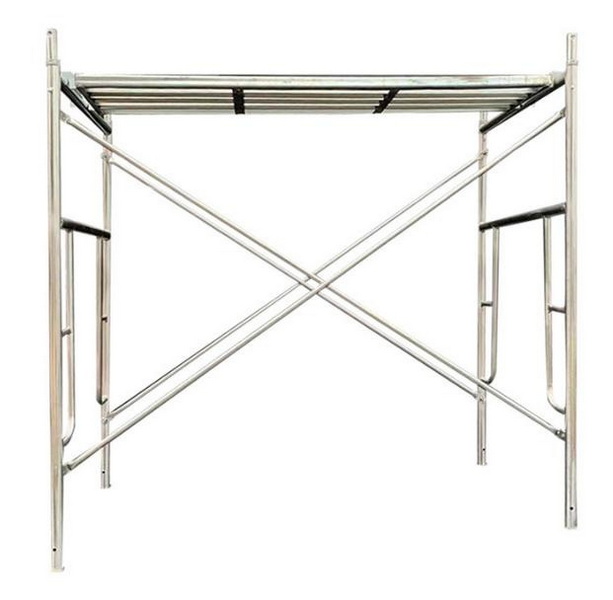
FAQ
1. What is the maximum height for metal frame scaffolding in high-rise construction?
According to OSHA and ANSI, fabricated frame scaffolding above 125 feet (38m) must be designed by an engineer. CSA standards require engineering for heights above 49 feet (15m), and some regions mandate designs for scaffolds over 60 feet (18m).
2. How often should metal frame scaffolding be inspected?
Inspections should be conducted before each use and at regular intervals during the project. Any damaged or worn components must be replaced immediately.
3. What fall protection is required for high-rise metal frame scaffolding?
Guardrails are mandatory for platforms above 10 feet (OSHA/ANSI) or 8 feet (CSA). Personal fall arrest systems should be used where guardrails are not feasible.
4. How is metal frame scaffolding anchored for high-rise buildings?
Scaffolding must be anchored to the building at regular intervals, typically every other floor and at the top level. Additional anchoring is required when using nets, tarps, or winches.
5. Can metal frame scaffolding be used in all weather conditions?
No. Scaffolding should not be used during storms, high winds, or icy conditions unless a competent person has determined it is safe.












